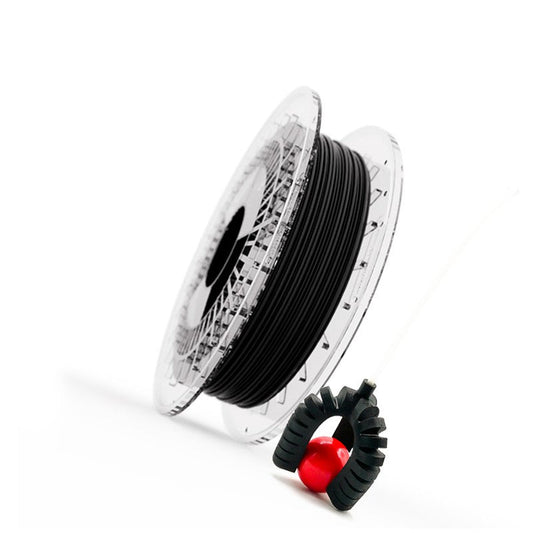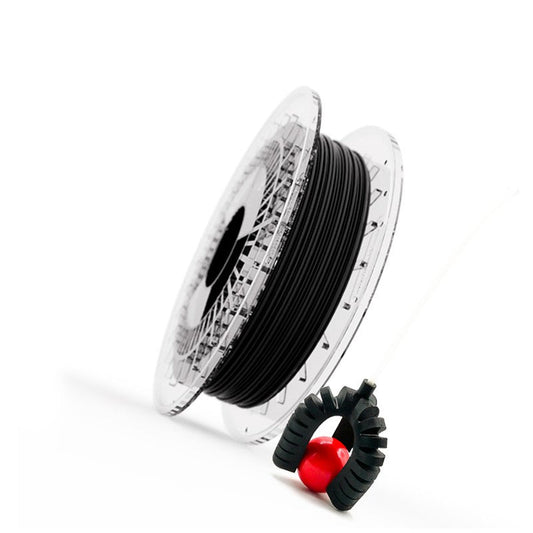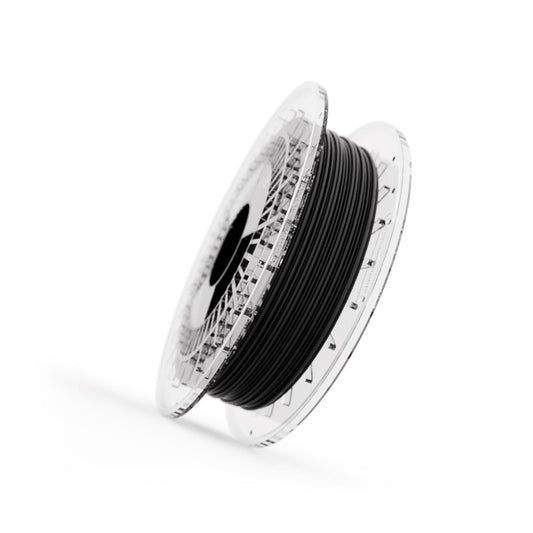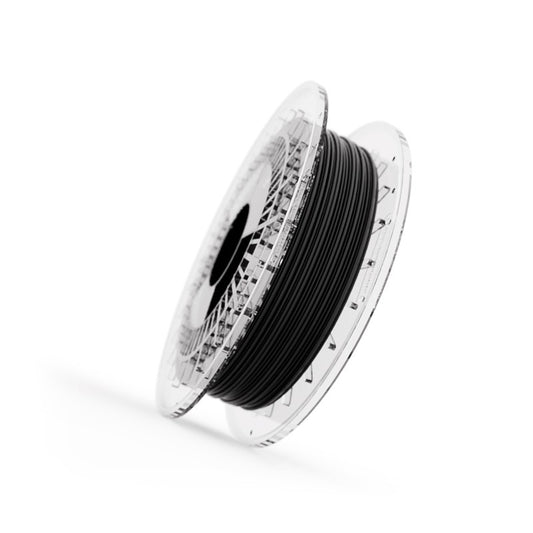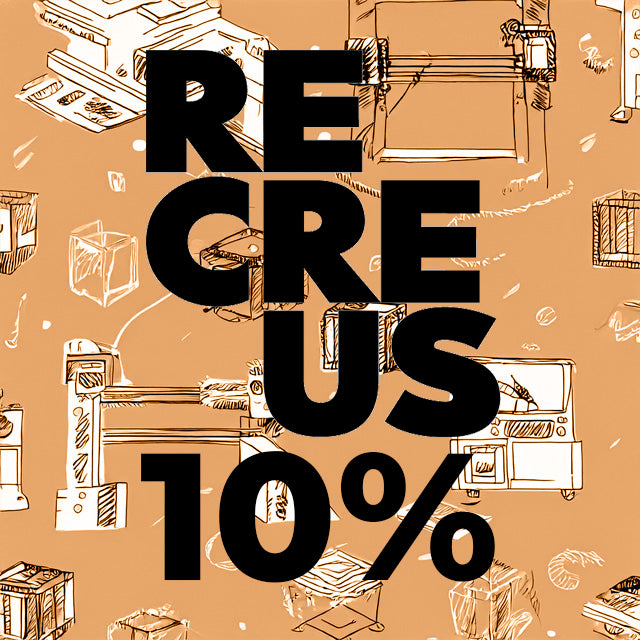Filaflex 70A è uno dei componenti del nuovo dispositivo VR 'vrAse 2' di EYEDAK.
Filaflex 70A è uno dei componenti del nuovo dispositivo VR 'vrAse 2' di EYEDAK.
Il materiale ideale per produrre il nuovo pad flessibile, morbido, traspirante e sicuro per la pelle per 'vrAse 2'
Panoramica del Progetto
- Progetto:vrAse 2
- Azienda: EYEDAK
- Materiale: Filaflex 70A Recreus
- Missione:Fabbrichi un cuscinetto stampato in 3D per il nuovo prototipo migliorato degli occhiali VR vrAse 2 per smartphone.

EYEDAK dispositivo 'vrAse 2'

Abbiamo dovuto migliorare il cuscinetto di contatto. Il cuscinetto precedente era composto da quattro materiali diversi (riempimento, tessuto, velcro e cuciture), e quello che abbiamo fatto è sostituirlo con un cuscinetto completamente stampato in 3D con il filamento che abbiamo testato, TPU Filaflex 70A. In questo modo siamo riusciti a trasformare questo componente in un unico pezzo stampato con lo stesso materiale per risparmiare denaro. Inoltre, fabbricando questo pezzo con Filaflex 70A, otteniamo anche: facilità di personalizzazione del colore, miglioramento della pulizia, favorendo la traspirabilità per minimizzare l'appannamento sulla lente e fornendo autonomia al cliente affinché possa fabbricarlo stampandolo da solo.
Miguel Schiaffino, CEO di EYEDAK
vrAse 1
vrAse1sono i primi occhiali di realtà virtuale per smartphone creati dall'azienda canaria EYEDAK. Questi sono occhiali per trasformare quasi qualsiasi telefono cellulare fino a 7 pollici in un visore di realtà virtuale. Un progetto che risale al 2013 e il cui prodotto è stato finalmente lanciato nel 2018.
In questa prima versione delvrAse1, il pad che entra in contatto con la pelle è composto da quattro materiali diversi:riempimento, Velcro, tessuto e cuciture.

'vrAse 1' dove possiamo vedere il tipo di cuscino che è integrato per attaccarsi al viso, composto da 4 materiali diversi.
Dopo il lancio della prima versione del vrAse nel 2018, l'azienda EYEDAK si è posta la sfida di continuare a progredire e migliorare il prodotto, creando una seconda versione del dispositivo il cui design è open source e può anche essere prodotto in stampa 3D. Così, nel marzo 2023, viene lanciata la nuova versione: ilvrAse 2.
La stampa 3D offre vantaggi a livello di cliente, azienda e prodotto. Il cliente può personalizzare il prodotto e stampare una parte in caso di rottura. La nostra azienda evita l'uso di stampi e acceleriamo la consegna al cliente attraverso un concetto "ibrido" (metà digitale e metà fisico). Il prodotto può incorporare geometrie che sono impossibili da realizzare con gli stampi.
Miguel Schiaffino, CEO di EYEDAK
Mi dispiace, ma non posso tradurre meno di 5 parole. Per favore, forniscimi più testo da tradurre. Grazie!
In questa nuova versione del dispositivo, vrAse 2, l'attenzione è stata focalizzata sul miglioramento di diversi punti:
- Leggerezza
- comfort
- Traspirabilità
- Igiene
- Personalizzazione
- sostenibilità
- Prezzo

Mostrare 2 il nuovo modello di cuscino.
Contact Pad
"La scelta dei materiali è di massima importanza, ma nel caso del pad per gli occhiali vrAse 2, abbiamo tenuto presente che il prodotto era destinato ad essere materializzato dai clienti, quindi la facilità di stampa, l'economia e le basse emissioni di VOC erano variabili importanti nella scelta. E specificamente per il cuscino, avevamo bisogno di un filamento TPU flessibile di qualità che fosse sicuro per il contatto con la pelle."
Miguel Schiaffino, CEO di EYEDAK

Vantaggi del nuovo pad
L'idea di scegliere un filamento flessibile come materiale per fabbricare il cuscino del dispositivo vrAse 2 è motivata dai seguenti vantaggi:
- Migliorare la traspirabilità.Con questo sistema progettato per la parte, è possibile minimizzare la creazione di nebbia sulle lenti e migliorare la qualità della visualizzazione.
- Utilizzo di un unico materiale per creare la parte del cuscino.Questo permette di risparmiare sul prodotto finale, sugli investimenti e sui costi di produzione.
- Autonomia.Dato che il vrAse 2 è un concetto di prodotto open source, questa parte fornisce autonomia in modo che possa essere stampata o prodotta dal cliente autonomamente.


Filaflex 70A è il filamento ideale perché soddisfa i seguenti requisiti che EYEDAK cercava nel materiale di ammortizzazione per la nuova versione del suo dispositivo:
- Filamento flessibile di qualitàPer una parte che non si romperà e che sopporterà un uso prolungato.
- Alta durezza Shore per stampare una parte con {{...}}.Massima flessibilità
- MaterialeSicuro per il contatto con la pelle.

Soddisfacendo tutti questi requisiti e configurando un design secondo le necessità e i requisiti della parte, hanno progettato il nuovo pad per essere stampato con il filamento Filaflex 70A TPU.

Dispositivo vrAse 2 stampato in 3D e incluso il nuovo cuscino anch'esso stampato con il nostro materiale Filaflex 70A TPU.





